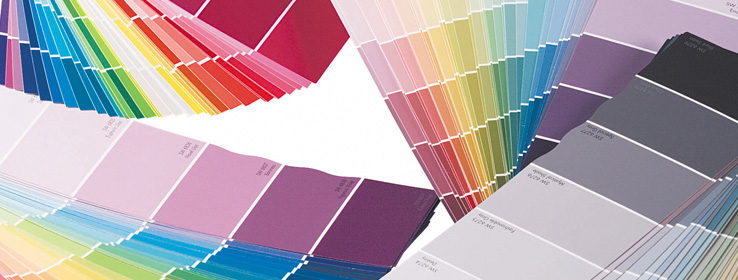Move over green and red. Seasonal décor ranges across the color spectrum.
Deck the halls with boughs of turquoise? ... coral? ... how about black? The traditional color scheme of red and green no longer has a lock on holiday palettes. Increasingly, we're celebrating the season with a wide range of colors – from nostalgic to fashion-forward to edgy.
"Christmas continues to have fewer and fewer traditional elements, and that includes less red and green," Michelle Lamb, editorial director of the trade newsletter The Trend CurveTM, which forecasts trends in color, pattern and design for manufacturers, interior designers and retailers.
Turquoise, the Pantone 2010 Color of the Year, will be a big player this holiday season, predicts Tina Wilcox, CEO and creative director of Black: A Retail Brand Agency. "Expect to see more of that color as a substitute for green."
There's also a new red in town for the holidays, says Bonnie Marcus, designer, the Bonnie Marcus Collection, of fashion-infused invitations and greeting cards. Instead of holly red, "it's more of a coral red, softer, with more orange." Paired with lime instead of the classic pine green, it's a fresh spin on the familiar pairing.
Lamb is seeing lots of berry and mauve tones for the holidays, a vintage palette that evokes the Victorian era. "There's a lot going on with nostalgia," she says.
Another popular palette this holiday season, according to Lamb, is off-white complemented by light metallics, such as champagne gold and soft copper, and pearlescent finishes rather than hard shiny ones. Mixed finishes, such as matte with luster, will also be on ample display.
And the black Christmas décor that started emerging a few years ago is now moving into the mainstream. "Black and white has been one of the hottest combinations for fashion and home, and a lot of vendors are promoting it for the holidays," says Wilcox, who displayed a black holiday tree at her agency last year.
Black is no longer considered too gloomy and macabre for the festive season, says Lamb. Instead, it's taking on the role during the holidays that it's long played in year-round fashion. "Black is viewed as less-funeral and more like a little black dress," she says.
Instead of pairing it with white, Lamb likes it with other deep colors, such as midnight blue and dark peacock, a look she calls "Soiree Noir." "It's not for everybody, but it's really sophisticated and dramatic."
Other fashion-forward influences moving into the holiday sphere include neon brights, plaids, paisleys and leopard prints, says Marcus, whose holiday card featuring a leopard-print high-heeled pump is one of her best sellers. "It's the economy," she says. "For the past few years, fun, fashion-driven stationery has been really hot." Those who can't splurge on expensive shoes can still feel fashion-forward buying a card, she says.
But the holiday pendulum continues to swing, and Lamb thinks traditional holiday colors will mount a strong comeback by 2012. "Our interest in nostalgia will bring back red and green," she predicts.

The meaning of holiday hues
Christmas: Red and green have been associated with the holiday for centuries. To early Christians, the colors had religious significance. Green represented the evergreen tree, symbolizing the eternal life of Jesus Christ, while red symbolized the blood shed during his crucifixion.
Hanukkah: The holiday itself, does not have traditional colors, but blue, white and silver are commonly associated with it. Making up the colors of the Israeli flag, blue and white have become the traditional colors for Judaism as a whole.
Chinese New Year: Red and gold are the traditional colors of this Buddhist celebration. Red symbolizes good luck in the coming year, while gold symbolizes wealth and happiness.
Kwanzaa: The holiday celebrating African community and culture has three hues: black for the people, red for their struggle and green for their hopes for the future.
Islam:A star and crescent moon often are used to represent the Muslim faith, as well as its holy days. The color green has a special place in Islam and is often found in mosques. Some say it was Muhammad's favorite color; others believe it symbolizes life.
Hinduism: Color has deep meaning and significance in the Hindu faith. Some of the main hues used in religious ceremonies and celebrations are red, symbolizing sensuality and purity; saffron, the most sacred color, representing fire; green, the color of life and happiness; and yellow, the color of knowledge.








